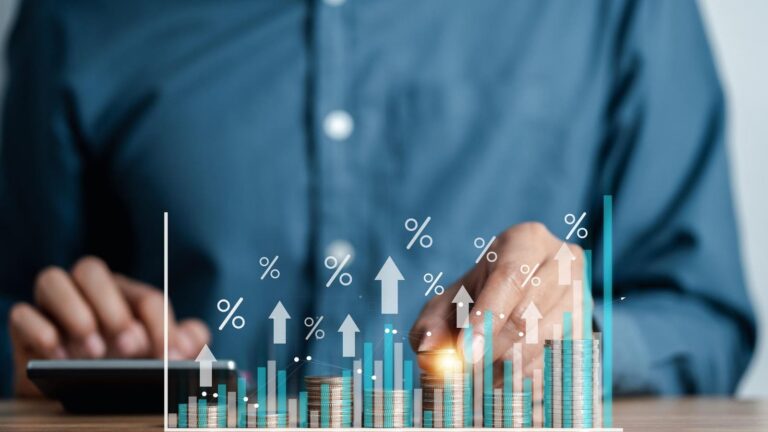The stock market finally found some relief thanks to a more-dovish-than-expected Federal Reserve, slightly encouraging government debt news, and short covering following a 10% correction in the averages. So, are worries about interest rates REALLY behind us? And if so, what are the best ways for investors to capitalize? These MoneyShow experts share their best insights and ideas.
John Eade Argus Research
Total Public Debt owed by the US federal government was $32.3 trillion at the end of 2Q23. Outside the US, the two largest holders of US Public Debt are Japan, which owns 3.5%, and China, which owns 2.5%.
Other nations among the top 10 holders own 9% of the debt, so the top 10 holders collectively own about 15%. The grand total of US debt owned by foreign holders is $7.7 trillion, or about 24% of the total.
While the absolute holdings level is up about 3% over the past year, we have seen pronounced shifts among the major holders. Japan’s bondholders historically have been long-term in nature, attracted to Treasuries while their local sovereign bond yields have been near zero for years.
A recent rate hike in Japan, though, has led to the repatriation of approximately $80 billion out of Treasuries and into local sovereign securities in the past year. China has also been selling, in part for political reasons. China’s current Treasury holdings are lower by about $135 billion over the past year.
But while some nations have reduced exposure, others have increased it. Canada has increased its holdings by 17% and the UK’s holdings are up 8% in the past year. We think this type of global demand for US Treasuries should help keep a lid on long-term rates in 2024.
Charles Carlson DRIP Investor
Investors who want a solid total-return stock in the tech sector should consider Cisco Systems
CSCO
Cisco Systems designs, manufactures, and sells Internet Protocol based networking equipment to the communications and information technology sectors. Products include switching products used in data centers and cloud security products.
After a lengthy period of little or no growth, Cisco has been putting up good growth numbers of late. In the fiscal fourth quarter, revenue grew 16%, while per-share earnings advanced 37%. For fiscal 2023 overall, revenue rose 11% on a 16% increase in per-share profits.
The strong revenue and earnings growth in the fiscal fourth quarter was driven by solid customer demand, market-share gains, and innovation in key areas, like artificial intelligence, security, and cloud. Total software revenue was up 17% in the quarter, with software subscription revenue up 20% year over year.
While growth may moderate in fiscal 2024, Cisco should still show gains in the top and bottom lines. The firm expects per-share profits for the fiscal year to come in between $4.01 and $4.08. Based on the low end of that guidance range, the shares trade at just 13 times fiscal 2024 earnings. That is a rather modest earnings multiple to pay for an industry leader.
Like virtually every information technology company, Cisco will try to capitalize on the growth of AI. One area where AI could provide real growth opportunities for the firm is the company’s cybersecurity business.
The history of the technology sector is filled with companies that were once leaders that were crushed by innovation. But there are a few stories in which “old” technology companies reinvented themselves, fueling huge gains in the stock price.
Cisco has the feel of an old player that is making the necessary changes to continue to be relevant in the technology markets of tomorrow. And those adjustments should drive a higher stock price over time. In the meantime, investors collect a nice and rising dividend stream.
True, technology stocks have been getting beaten up, and Cisco is trading off its 52-week high of just over $58 per share. Still, the stock can post decent gains into the end of the year. Please note Cisco Systems offers a direct-purchase plan whereby any investor may buy the first share and every share directly from the company.
Michael Foster Contrarian Income Report
You and I, as careful contrarians, have big payers at our fingertips that we could only dream about back in the days of optional seat belts. Indeed, in the 2020s, Jamie Dimon and his team launched a couple of big paying ETFs – JEPQ among them. It recently yielded 11.5% and, thanks to the recent sharp pullback in tech, this is the time to buy.
JEPQ’s strategy is pretty simple. First, it buys and holds blue-chip tech payers like Apple
AAPL
MSFT
Neither name, however, is anywhere close to qualifying for Contrarian Income Report. AAPL recently yielded only 0.6% while MSFT paid only 1%.
But we can create a “synthetic yield” by selling puts and writing covered calls around these positions. Tech stocks tend to command larger option premiums—even cash cows like AAPL and MSFT. Sell a put here, a call there, and we can turn these into double-digit payers.
But option writing is a grind. If it isn’t a full-time job, it’s at least a side hustle. To maximize our cash flows we need to sell options every month or, really, every week.
A J-O-B? When we’re trying to retire on dividends? No thanks. Instead, we’re outsourcing the option writing to Dimon and his management team. These guys eat regional banks for lunch. In between meals, they can write options for us.
The 10-year Treasury yield will eventually settle down, and when it does, the tech-heavy Nasdaq is likely to bounce. When the prices of MSFT and AAPL rise, or merely trade sideways, there is plenty of income for JEPQ to dish out.
I’m not sure what 2024 holds, but that isn’t our concern at the moment. JEPQ is an 11.5% cash cow with a floor in place thanks to the recent market turmoil. Let’s buy it before it bounces.
Recommended Action: Buy JEPQ.
Howard Tullman G2T3V
In this interview from the conference floor at the 2023 MoneyShow/TradersEXPO Orlando, he shares several of the lessons he’s learned over his decades as a VC/private tech investor and operator. He also provides insights into current sector conditions and emerging developments of interest to investors. Specifically, Howard shares the five criteria he uses to judge every business plan that comes across his desk. He also explains why investors should “starve your losers early, feed your winners, and be patient.” He commends strategic moves being made by some of the “Magnificent Seven” stocks, including Amazon
AMZN
Read the full article here









